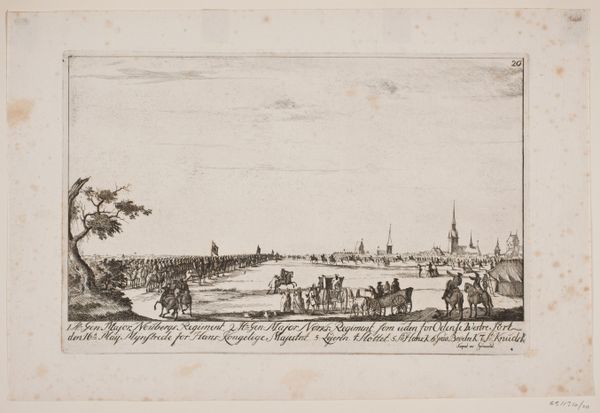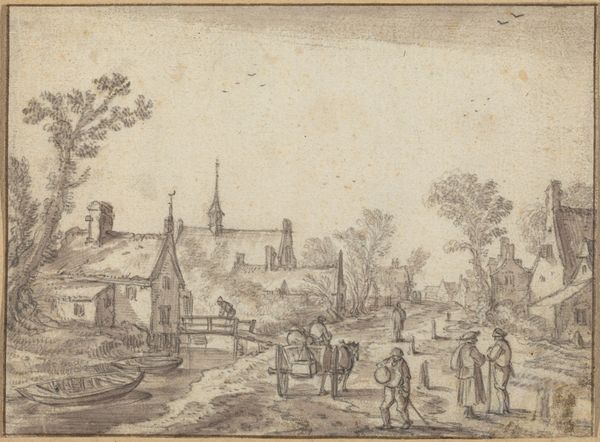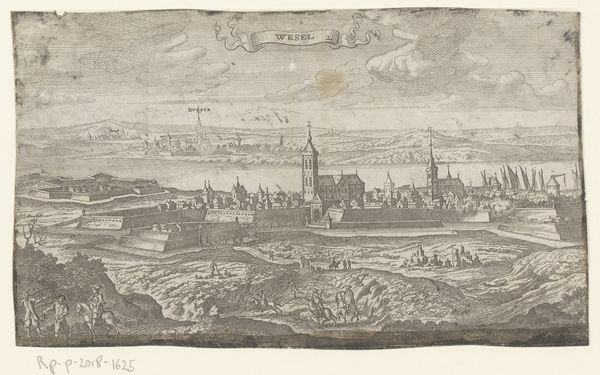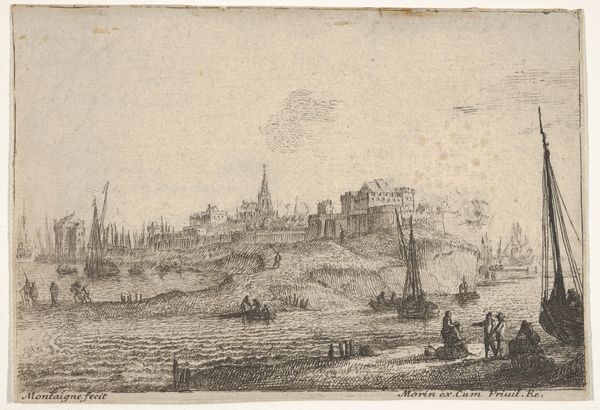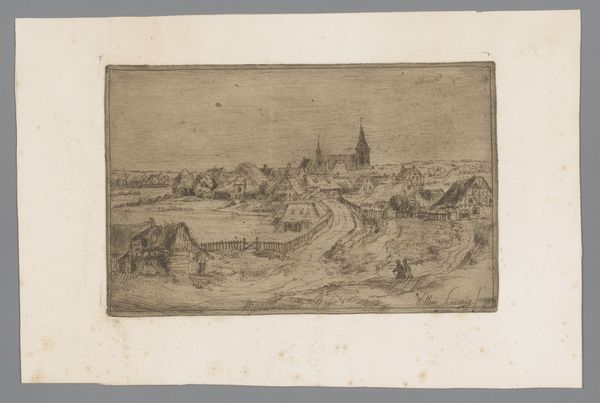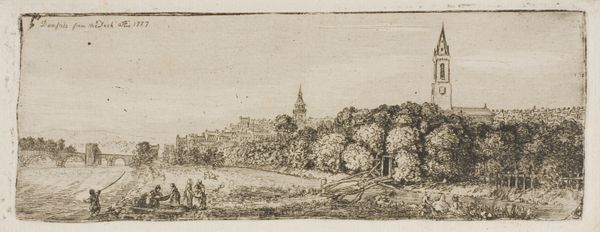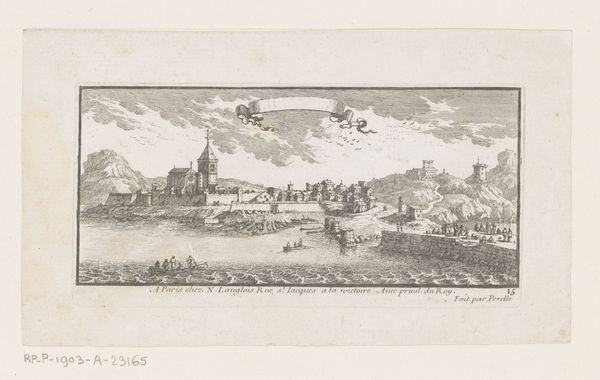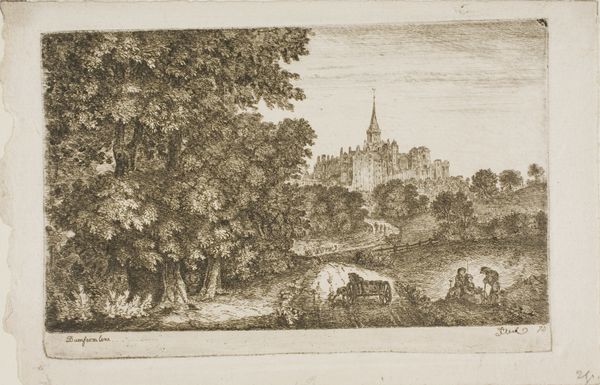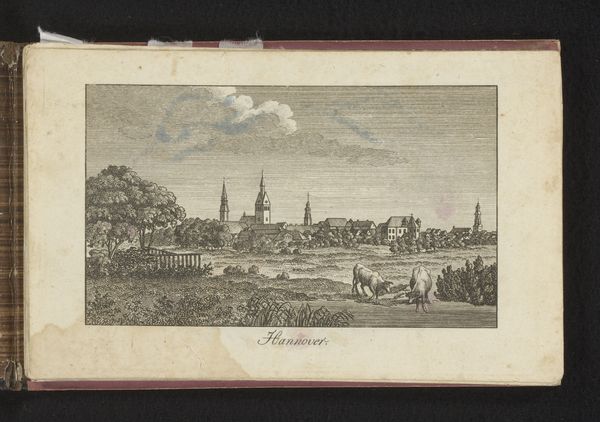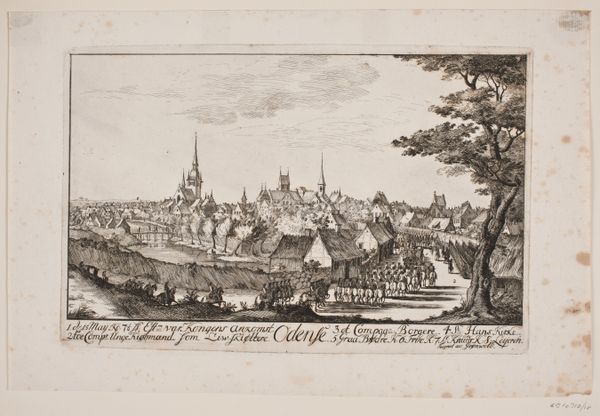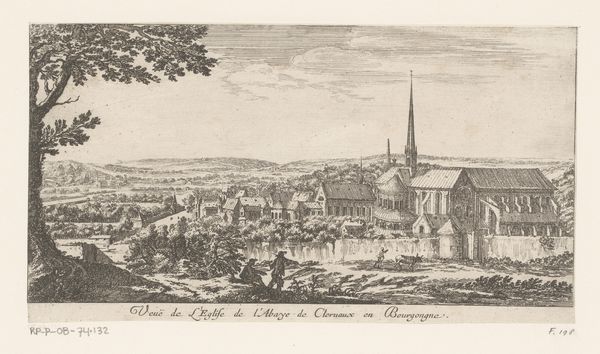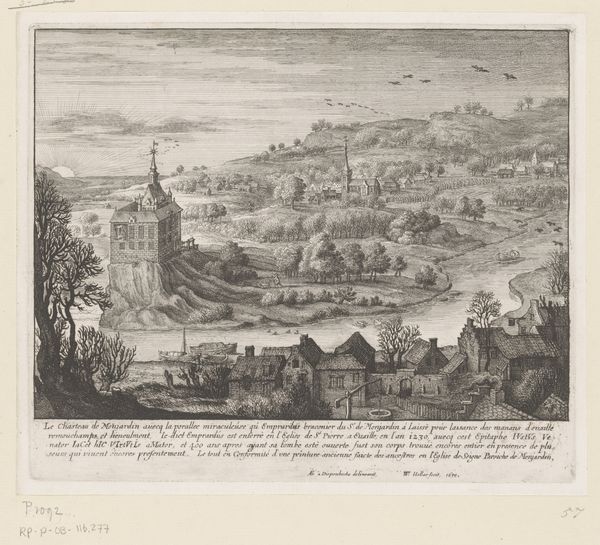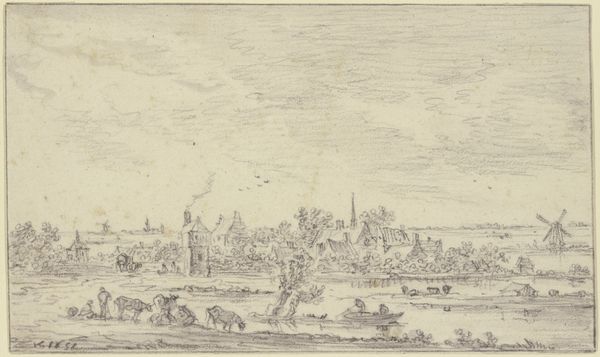
print, etching, engraving
#
baroque
# print
#
etching
#
landscape
#
etching
#
cityscape
#
engraving
Dimensions: 221 mm (height) x 347 mm (width) (plademaal)
This print, titled "Roskilde," was made by Poul Isac Grønvold in the mid-18th century using etching. Etching is an intaglio printmaking process, where lines are incised into a metal plate with acid, leaving behind an image that is light on dark, delicate, and linear. Consider the labor involved in its production. The etcher would have needed considerable skill, carefully applying a waxy ground, incising the image, and immersing the plate in acid, before printing the image. The linear quality of the etching suits the subject matter well. We see a carriage and boats as well as architecture, all described with the same fine lines. In its time, printmaking was not seen as high art, but rather a commercial practice, used to disseminate images widely. The choice of etching also suggests an effort to create multiples, efficiently responding to consumer demands. Recognizing the role of material and process allows us to see how Grønvold's "Roskilde" challenges traditional distinctions between fine art and craft.
Comments
No comments
Be the first to comment and join the conversation on the ultimate creative platform.
